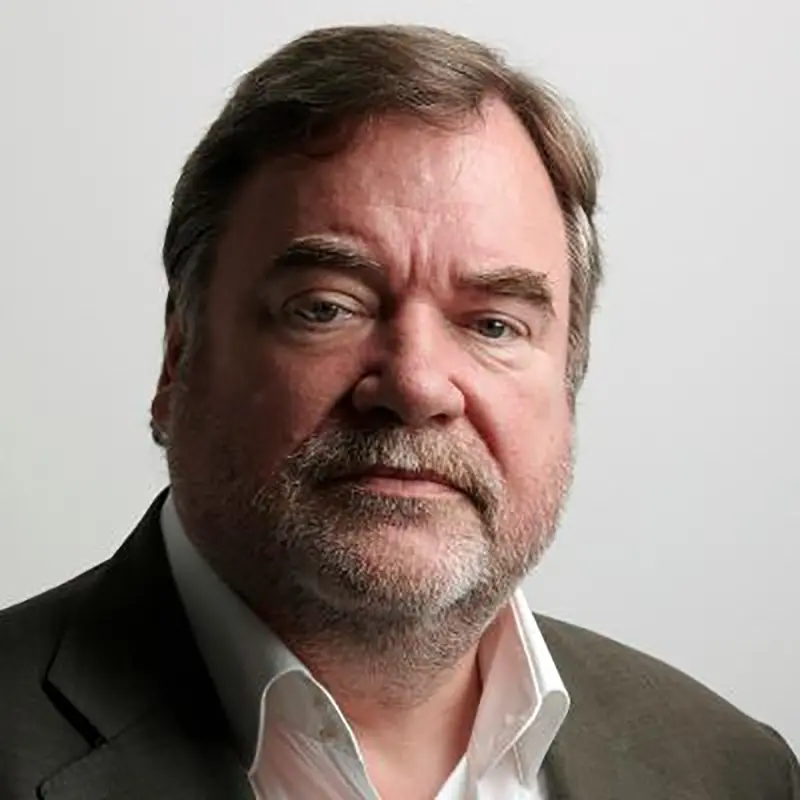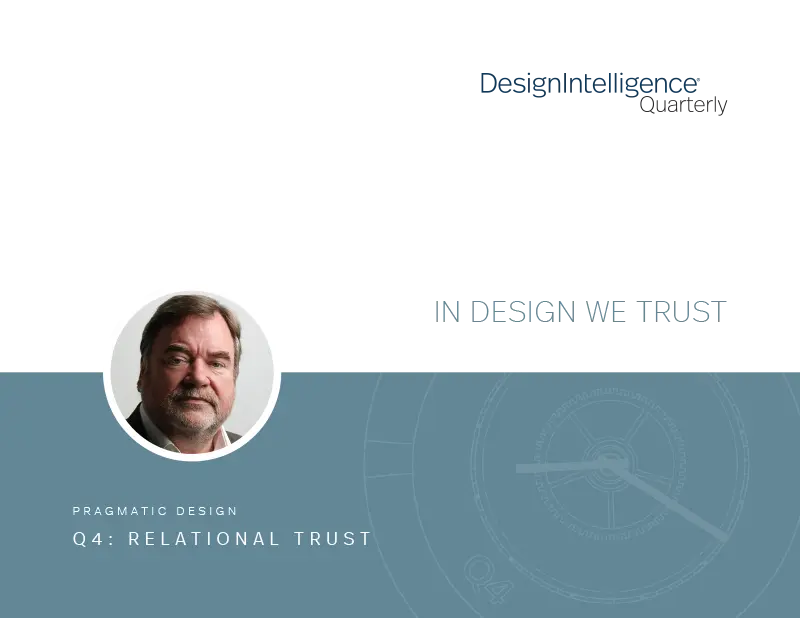In Design We Trust
by Paul Finch
Programme Director, World Architecture Festival
November 15, 2023
What lies under the covers of collaboration?
The Pulitzer Prize-winning novel “Trust” by Hernan Diaz is an intricate exercise in historical, psychological and literary perspective. It concerns two lives and the way they are lived or, rather, the way they were lived according to accounts written by people (themselves artificial literary creations) with personal axes to grind. It is all very French, in the same sense one might regard that old film favourite “Destry Rides Again.” The story is reviewed by different characters from their individual perspectives. Which version you believe depends on the extent to which you trust the narrator or imagine you yourself know what happened. You have the evidence of your eyes — but a film, like a novel, is only rarely a documentary.
The worlds of design and architecture have aspects of both literature and film that inform them. These qualities also inform the view of critics, clients and all those who play a part in delivering the ambitions of designers in the real world. In the narratives about the creation of a design and a building, what weight do you give to the narratives of those concerned? To what extent do you trust their individual accounts because of your own personal experience — of the building, its type or the constituent players?
Formally, the extent to which trust is or is not justified may be tested in court because of a falling-out between the multiple parties involved. At what point might the trust inherent in any decent collaborative project vanish? Because of technical failures or cost over-runs? Or is it an attempt to recover money from anyone with an insurance policy? At the start of the project, even those that end in tears, we assume the parties were prepared — not only to work together, but to believe they could achieve their mutual objectives.

The question is whether that belief is justified. That is to say, on what basis can a notion of “trusted relationship” be extended to the parties involved. Even if clients believe they have such a relationship with their various consultants, contractors and sub-contractors, how do they know similar relationships exist between the other parties? The multiplicity of relationships between corporate entities is complex enough but add to that the relationships between all the individuals who may be involved and you have a Sargasso Sea of potential disagreement and conflict.
Attempts to avoid the potential for tension generated multidisciplinary working as an approach, as with firms like Arup and Building Design Partnership in the U.K. and Nikken Sekkei in Japan, plus large construction companies with their own architectural departments.
All one can say is that whatever the advantages may be, these have not become universal ways of working. And it is not immediately apparent why large organizations are more trustworthy than small ones or that corporate relationships are more significant than those of the individuals who actually design, cost, engineer, programme and deliver the project. In the end, the question of trust in construction projects comes down to personal relationships. It is not like buying medical insurance or a newspaper from a company; it’s more like whether you trust the doctor or the reporter.
Trusted relationships, if the phrase is more than lip service, can express itself in the way projects are run and insured. For example, when Terminal 5 at Heathrow was procured, the client bought project insurance covering all those concerned with the design. The deal was simple: If any of the parties found they had made a mistake, or were alerted to one, they would immediately tell the entire team and take responsibility for rectifying the error. This avoided legal disputes, compensation disputes and delays, instead prioritising the importance of delivering the project on time and budget.
A “pot” of bonus money was available for the team at the end of the project; the only penalty for the offending team member was to lose some or all of their share of the bonus. The philosophy was clear: We all make mistakes, but we are better off to address and sort out those mistakes early rather than keeping antagonistically quiet and self-focused in our lawyer-protected silos while the problems worsen and compound.
Trust is hard to earn but easy to lose. Lawyers are people you need to trust, but in relation to construction in the U.K., they are doing their best to drive out any idea of trust in favour of an aggressive and (to me) unethical approach to client/consultant relationships.
The sad situation currently involves lawyers writing contracts for architects under which they are obliged, if they wish to win the commission, to take responsibility for the designs of other consultants with whom the architect has no contractual relationship. It is an offer some feel unable to refuse.
Do such lawyers relish their Mafia-style behaviour?
Paul Finch is the programme director of the World Architecture Festival and a regular contributor to DesignIntelligence.


